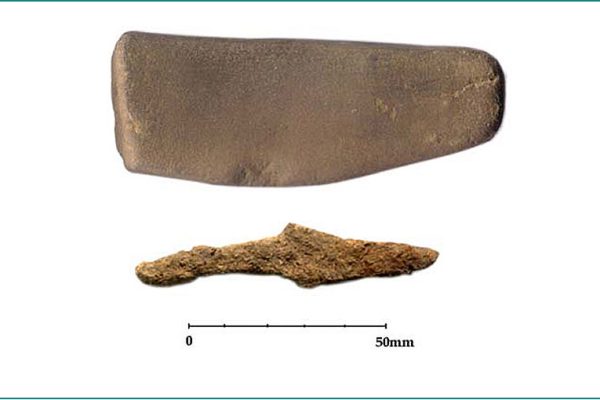Excavations at Newtown




This site at Newtown was excavated in advance of the construction of the Limerick Southern Ring Road. It was initially identified in the course of test trenching in advance of the construction phase, and showed no above ground indications prior to archaeological works commencing.
The central structures were initially identified, as was a pit containing cremated bone and pottery. After the excavation began the true extent of the site became clear. Topsoil stripping revealed further archaeological features, and these were subsequently excavated.
A vast range of archaeological material was been excavated. This includes two houses of Bronze Age date, a burnt mound, seven pits containing funerary pottery and cremated bone, several pits interpreted as possible roasting pits, as well as a large sub-triangular enclosure, 50 meters in diameter with associated house sites and finds.
The archaeological material uncovered spans at least 3,000 years, from the Bronze Age (c.2, 000 BC), represented by the houses and burial pits, up to the Early Medieval period (beginning c. AD 500), during which time the large enclosure was constructed.
The large size of the enclosure, coupled with the quality of artefacts would suggest that this was a high status site in the Early Medieval period, and was constructed on top of a Bronze Age settlement and cemetery.
This excavation is published:
Coyne, F. and Collins, T. 2003 Plectrum-shaped enclosures – a new site type at Newtown Co. Limerick? Archaeology Ireland, 17, 4, 17-19.
Coyne, F. 2005 Excavation of an early medieval ‘plectrum-shaped’ enclosure at Newtown Co. Limerick, North Munster Antiquarian Journal, 45, 51-63. Coyne, F. 2007 Excavation of an early medieval ‘plectrum-shaped enclosure at Newtown Co. Limerick, in J. O’Sullivan and M. Stanley (eds) Settlement, Industry and Ritual. Monograph 3. Dublin: NRA [now TII], 63-72. Coyne, F. 2013 Newtown A/E: two early medieval enclosures in Bermingham, N, et al (eds) River Road: the archaeology of the Limerick Southern Ring Road Monograph 14. Dublin: NRA [now TII], 102-105.
